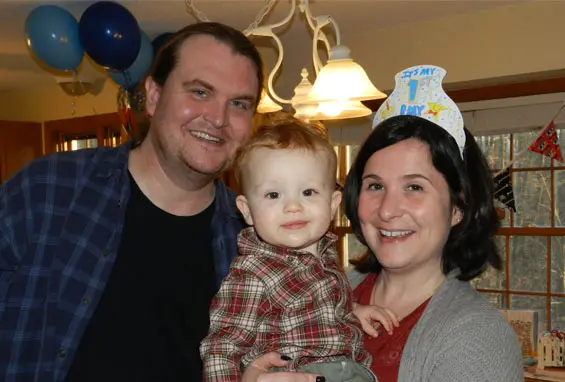Donor Egg
Donor egg treatment is defined as an in vitro fertilization (IVF) cycle in which a person with female reproductive organs uses another person’s eggs (the donor) rather than their own.
We are among the leading provider of donor egg treatment in the United States, and home to more than 12,000 babies born from donor eggs. We are one of only a few centers with a robust donor recruitment program. We recruit, screen, and cycle over 500 egg donors per year.
What to expect
Donor egg treatment is commonly needed by:
- People who have decreased ovarian function, premature ovarian failure, or genetic abnormalities. In most cases, donor egg treatment offers a high chance of pregnancy even if other infertility treatments were unsuccessful.
- Patients with unsuccessful IVF treatment that have used their own eggs
- Cancer survivors
- Same-sex male couples
- Single men
Though the patient will not be using their own eggs, they will still be carrying the child, so they must undergo the same screening as all infertility patients (the same goes for their partner, as applicable). Patients may also work with a Gestational Carrier for their family building. The American Society for Reproductive Medicine (ASRM) requires donor egg recipients to meet with a mental health provider skilled in third-party reproduction. The mental health provider will provide support and education to patients about this new way to have their families.
Egg donor evaluation and donation process
At Shady Grove Fertility, our goal is to make the donor selection process as smooth as possible for our patients. SGF recruits thousands of potential egg donors each year and will approve five percent of applicants to proceed with an egg donation cycle. Egg donors will undergo medical, psychological, and genetic screening, ensuring that the eggs our patients receive have the optimal chances for success.
Each donor has a profile featuring demographic characteristics (eye color, race, ethnicity, etc.) childhood and adult photos. The profile also contains the donor’s individual and family health history, likes and interests, and a personal essay about their motivation to donate.
Shady Grove Fertility has chosen Luminary Donor Eggs as our preferred Egg Bank. Once an SGF egg donor has completed the egg donation and eggs are frozen, the eggs will be catalogued on the Luminary Donor Eggs database.
Frozen donor egg program
Luminary Donor Eggs is an innovative egg bank founded by the country’s leading fertility experts. SGF partners with Luminary Donor Eggs to provide patients immediate access to donor eggs.
Luminary Donor Eggs offers recipients a convenient and cost-effective process in which patients receive a cohort of 6 eggs and a blastocyst promise for $15,000, plus shipping and handling. Recipients may acquire additional eggs in groups of 2 to increase the likelihood of multiple embryos.
SGF offers Shared Risk for recipients matching with frozen eggs from Luminary Donor Eggs. This provides patients with peace of mind knowing they will deliver a baby or receive a refund.

The process is simple
1: Register with Luminary Donor Eggs
2: Select an Egg Donor
3: Confirm match and speak with a genetic counselor
4. Contracts and payment
5. Eggs shipped to recipients preferred SGF Embryology Lab
6. Egg thaw treatment started
Patients have the option to work with other commercial egg banks listed below, to use an agency-recruited egg donor, or a directed (known) egg donor they chose.
Frozen donor egg bank options
Donor Egg Bank USA , Fairfax Egg Bank, and Cryos Egg Bank have vast databases of donors with the ability to ship eggs all over the country, without presenting any risk to the eggs themselves. This provides our patients with a multitude of options when making this important decision. SGF does not offer the Shared Risk 100% Refund Program when working with one of these egg banks. Patients will pay the egg bank directly for the eggs and Shady Grove Fertility for the donor egg thaw cycle.
Success rates
Cost
Patients with little or no fertility coverage have access to two self-pay packages, giving them peace of mind knowing what their out of costs will be. The following packages are for patients matching with Luminary Donor Eggs.
The Single Cycle Package includes everything a patient needs, including:
- All donor expenses (SGF donors only)
- One donor egg thaw cycle
- Routine laboratory services to create embryos
- Cryopreservation of embryos
- Routine cycle monitoring for the recipient or gestational carrier (ultrasound and blood work done at SGF in preparation for an embryo transfer)
- One embryo transfer
Patients will pay Luminary Donor Eggs for the cost of eggs and will have the ability to secure additional eggs at a per-egg cost, allowing patients flexibility.
Additionally, eligible patients can take part in SGF’s Shared Risk 100% Refund Program, which covers up to six donor egg packages, outlined in the Single Cycle Plan, and receive a 100 percent refund if a baby is not delivered (some exclusions apply). Patients must use all frozen embryos before moving to the next donor egg package. Patients in the Shared Risk 100% Refund Program may also secure additional eggs at a per-egg cost.



